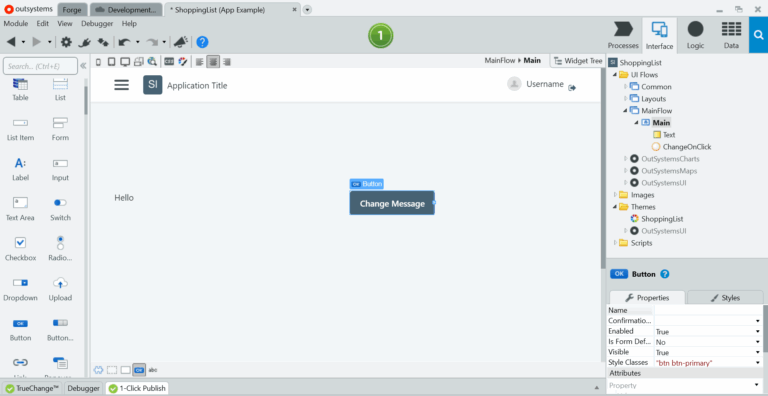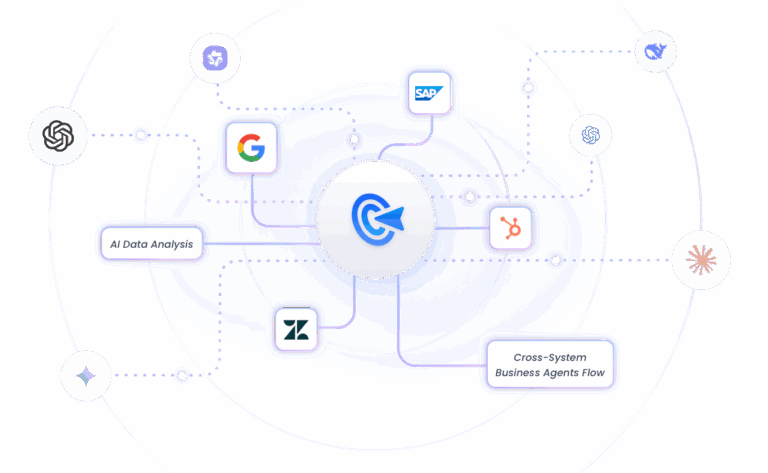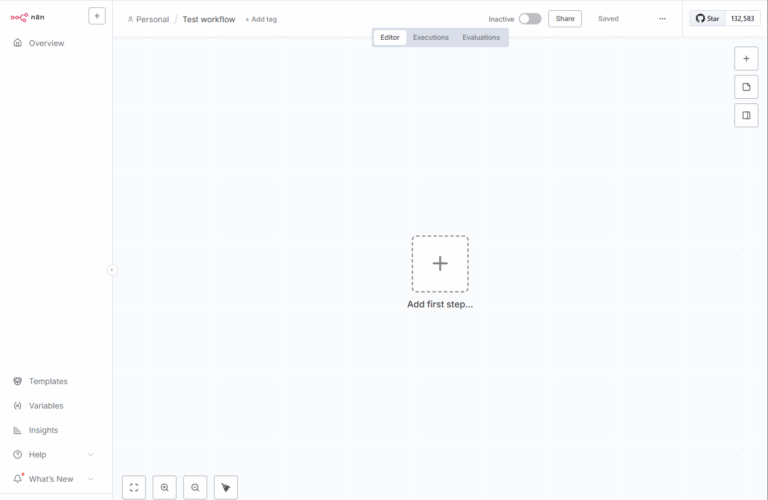Top 8 Low-Code AI Platforms for Quick Development
The rapid advancement of Artificial Intelligence (AI) is transforming industries. But developing comprehensive AI solutions often requires specialized expertise and lengthy development cycles.
Or does it?
Luckily, the online world is full of low-code AI platforms that empower teams to design, train, and deploy intelligent applications with little to no manual coding. In this article, we will talk about the best no-code/low-code AI tools, including their key features and user feedback.
1What Are Low-Code and No-Code Development?
Low-Code for Accelerated Development
Low-code AI platforms provide a simplified environment for building, training, and deploying AI-powered applications. Instead of writing complex code from scratch, users can leverage drag-and-drop interfaces, pre-built templates, and AI capabilities to create sophisticated solutions.
More importantly, these tools still allow developers to add custom code when advanced functionality is required.
No-Code Simplicity and Wider Accessibility
Similarly, the no-code AI tools go a step further and eliminate the need for coding entirely. They focus on accessibility for non-technical users, especially in the business world, like sales professionals and business analysts.
Usually, no-code AI platforms are guided by wizards, natural language commands, or a simple dropdown menu to assist users in automating basic tasks and generating insights.
2The Core Benefits of Adoption
Leveraging a professional low-code AI platform can bring a multitude of advantages for a business:
- 1. Quick Development: With visual workflows, built-in AI models, and project templates, teams can build applications and workflows can be built in days, if not hours, instead of months.
- 2. Accessibility: It breaks the dependency on scarce and expensive data scientists and ML engineers. Now, domain experts who understand the business problem best to build the solutions themselves.
- 3. Lower Development Costs: Reduce the need for large, specialized technical teams and the extensive training cycles required for traditional AI development.
- 4. Promote Innovation: Encourages experimentation and faster iteration cycles due to lower costs and quick development cycles. This enables organizations to adapt quickly to the market trends.
- 5. Scalability: Low-code AI tools generally include built-in cloud infrastructure, making it easier to scale applications as demand grows.
Potential Risks and Challenges to Manage
Incorporating new technology into your business is not always smooth sailing. Here are a few potential risks of low-code AI that you should manage proactively:
Platform Limitations: Most low-code tools fall short of expectations when dealing with complex or unique business scenarios. They don't just come up with out-of-the-box solutions.
Skill Gaps: Even with low-code, users need a basic understanding of AI principles to build effective solutions.
Hidden Costs: Pricing models tied to usage can escalate quickly.
Integration Limitations: Not all low-code AI software connects seamlessly with legacy systems, which can cause workflow bottlenecks.
3How to Choose the Right Platform: A Decision Framework (Key Evaluation Criteria)
Because of the challenges explained above, it's crucial to shortlist the low-code AI that fits your specific needs. You can evaluate the tool against the following factors for optimum performance:
- 1. Integration Ecosystem: Evaluate how well it connects with your existing tech infrastructure, like databases, CRM, ERP, or cloud services.
- 2. Use Cases Alignment: The platform must support your core business needs, be it workflow automation, chatbot development, or enterprise app building.
- 3. Scalability and Performance: You need to confirm it handles growth in users, data, and workflows without performance issues.
- 4. Security and Compliance: If your business requires strict security compliance or audit trails, choose the low-code AI that offers such enterprise-grade controls.
- 5. Pricing and Value: This point is very important for determining whether the pricing tiers are transparent, predictable, and sustainable as usage scales.
Luckily, we will cover all these factors when reviewing each no-code AI platform.
4Best Low-Code/No-Code AI Tools in 2025
After understanding the basics about no-code AI tools, it's time to dive into the details:
1Outsystems

Best for: Enterprises needing to deliver complex, mission-critical web and mobile applications quickly.
OutSystems is an enterprise-grade low-code AI platform for building full-stack applications and intelligent agents. Teams can build apps rapidly while handling complexity, integrations, and scalability. Moreover, this tool combines drag-and-drop visual development with AI-powered integration to enable seamless development of custom agents.
Key Features
- Drag-and-drop visual UI with prebuilt components and templates for rapid app deployment.
- Connects with existing enterprise systems via APIs and connectors as well as extends functionality with custom nodes.
- Built-in tools for version control, debugging, automated deployments, and multi-environment support for dev, test, and production phases.
- Compliance with certifications like ISO 27001, SOC2, and PCI DSS to meet industry and regulatory standards.
- Offers flexible deployment with the ability to run apps on clouds, on-premises, or hybrid setups.
User Reviews
Many users praise this platform for how fast one can build apps compared to traditional coding. However, its licensing and maintenance costs exceed the budgets of smaller organizations. The pricing depends heavily on scale, which most developers cannot afford.
2GoInsight

Best for: Enterprises requiring secure, complex workflow automation and multi-agent AI systems with human-in-the-loop oversight.
GoInsight.AI is an enterprise-grade AI automation platform that promises secure, auditable workflow orchestration and multi-agent collaboration. Unlike its peers, it integrates human-in-the-loop steps with AI automation to make critical decisions accurately.
Moreover, GoInsight.AI unifies the entire AI operations of your enterprise within a visual low-code environment via multi-agents and knowledge bases.
Key Features
- Drag-and-drop low-code editor for building AI-driven workflow.
- Orchestrates collaborative AI agents for parallel task execution.
- Role-based access control, audit logs, and private/on-premise deployment options for added flexibility.
- Connects AI to enterprise data through knowledge bases for contextual understanding.
- Allows human intervention and approval in automated processes when needed.
3n8n

Best for: SMBs needing powerful workflow automation with flexibility, control, and custom integrations.
n8n is a flexible, open-source AI automation platform that promises both no-code and low-code building blocks. Because of its open-source roots and technical flexibility, n8n is ideal for building multi-step AI agents and complex integrations.
Key Features
- Connects to over 500 apps and services, with the ability to connect to any REST API.
- A drag-and-drop interface with the ability to add custom JavaScript or Python code for advanced logic.
- Provides options for building AI agents and debugging with data replay and inline logs.
- Offers both self-hosted and cloud-hosted deployment.
- Pricing is based on workflow executions, which can be more predictable.
User Reviews
n8n is praised by users for its affordability, flexibility, and rich customization. Many reviewers highlight that the platform strikes a good balance between a no-code builder and a developer-friendly tool.
On the flip side, its steeper learning curve and complex customization needs are daunting for non-technical users.
4Zapier
Best for: Small businesses and startups that seek quick automation across a vast number of web apps.
Zapier is a highly popular no-code AI automation platform that connects 6,000+ apps and services on the go. With this tool, users build "Zaps" or workflows based on a simple action-trigger logic. For instance, you can automatically send Gmail attachments to Google Drive or post Slack updates when new leads are added to a CRM.
Key Features
- Connects with 6,000+ apps, including Google Workspace, Slack, Salesforce, HubSpot, Airtable, and more.
- Easy drag-and-drop builder with step-by-step setup for creating "Zaps" (triggers + actions). No coding skills required for this.
- AI-powered options like AI builder, mapping, suggestions, and auto-documentation.
- Supports more complex logic via multiple steps, conditions, and filters.
- Includes features like webhooks, custom logic paths, and integration with premium apps for more advanced users.
User Reviews
Zapier receives strong reviews for its ease of use and massive integration library. It boasts simple and quick automations without needing IT involvement. Zapier's most common criticism is its pricing. For businesses with many automated processes or high task volumes, monthly fees become significant.
5Appian
Best for: Large enterprises, especially those in financial services and healthcare that need complex process automation with strict compliance.
Appian is a low-code automation tool for business process management (BPM) and rapid application development. Designed for medium and large enterprises, it enables teams to build, deploy, and operate applications and workflows quickly.
Moreover, Appian takes pride in its ability for Intelligent Document Processing (IDP) and scalable internal tools.
Key Features
- Visual interface for building applications 10x faster than traditional coding.
- SOC 2 Type 2, HIPAA, FedRAMP, and ISO 27001 compliance for data security and privacy.
- Integrates with Google Cloud, AWS, and Azure for advanced AI functionalities.
- Cloud-based or on-premises deployment options.
- Natively connects with Salesforce, SAP, Microsoft Power BI, and many more.
User Reviews
Its visual process modeling tools, enterprise readiness in governance/security, and ability to automate document workflows are appreciated by users.
The learning curve is steep during the initial stages. Also, in certain cases, performance with large volumes of data can expeirence latency, which is a huge downside for large businesses.
6Google AutoML
Best for: Teams looking to build ML models quickly for predictive analytics and computer vision tasks.
Google AutoML is a part of Google Cloud's AI/ML offerings that can automate everything from data preparation, model selection, to deployment and prediction. With limited ML expertise, developers can build and deploy ML models for tasks like image recognition, text classification, and forecasting.
Key Features
- Advanced AI functionalities like automated data preprocessing, feature engineering, and hyperparameter tuning.
- Handles image classification, object detection, language and text classification, and tabular data models.
- Provides metrics, evaluation reports, and options for batch vs online prediction.
- Fully integrated with Vertex AI and other Google Cloud services for seamless deployment.
- Easy deployment and integration into applications with REST and APIs.
- Built-in templates for rapid app development.
- Offers real-time collaboration between business users and developers well as intuitive dashboards for monitoring.
- AI-assisted development and ML capabilities for smart applications.
- Supports web, mobile, IoT, and cloud/on-premises deployment.
- Rich extensibility with custom code support and integrations via REST and OData.
User Reviews
Users value it for powerful integration with Google's AI infrastructure. The pre-built flows and automated tuning are very helpful for speeding up ML experiments and model creation.
However, it requires data expertise for optimal results, and any mistakes can degrade the model's performance. Additionally, the cost can escalate quickly if you are dealing with large datasets.
7Mendix
Best for: Enterprises that need to accelerate digital transformation by building scalable web and mobile applications
Mendix is primarily a low-code application development platform with visual modelling and integration capabilities. Businesses use it for designing full-stack enterprise applications and their deployment and maintenance.
Key Features
User Reviews
The combination of visual tools with extensibility via custom code is an appealing factor for non-technical users. On the negative front, some users report performance slowdowns when applications become large or deal with heavy data loads.
5Comparison Table of Low-Code AI Platforms
The table below provides a deatiled understanding of the key differences among these tools:
AI Platform | Best Use Case | Ease of Use | Integration |
Outsystems | Enterprise apps | Medium | Built-in connectors for 400+ systems |
GoInsight | Complex workflows involving AI agents, knowledge bases, and human-in-loop | Very ease | Extensive; supports legacy systems and APIs for enterprise integration |
n8n | Flexible workflow automation | Hybrid UI with code options | 500+ integration + self-hosted for full control |
Zapier | Automations across many SaaS apps | High | Largest ecosystem |
Appian | Case management, workflows + RPA | Medium | Strong; focuses on enterprise systems |
Google AutoML | Building custom ML models | Medium, but some ML knowledge helps | Native integration with Google Cloud services |
Mendix | Developing mission-critical enterprise apps; | Medium | Supports REST, SOAP, and enterprise systems |
Now you know the best low-code or no-code AI platforms in 2025. The next step is to decide the right tool for your business needs. If you want to harness the AI powers like never before, try GoInsight.AI. Its ability to use human-in-the-loop controls, transparency via audit logs, and the integration of private enterprise knowledge are viewed as game-changers for enterprises.






Leave a Reply.